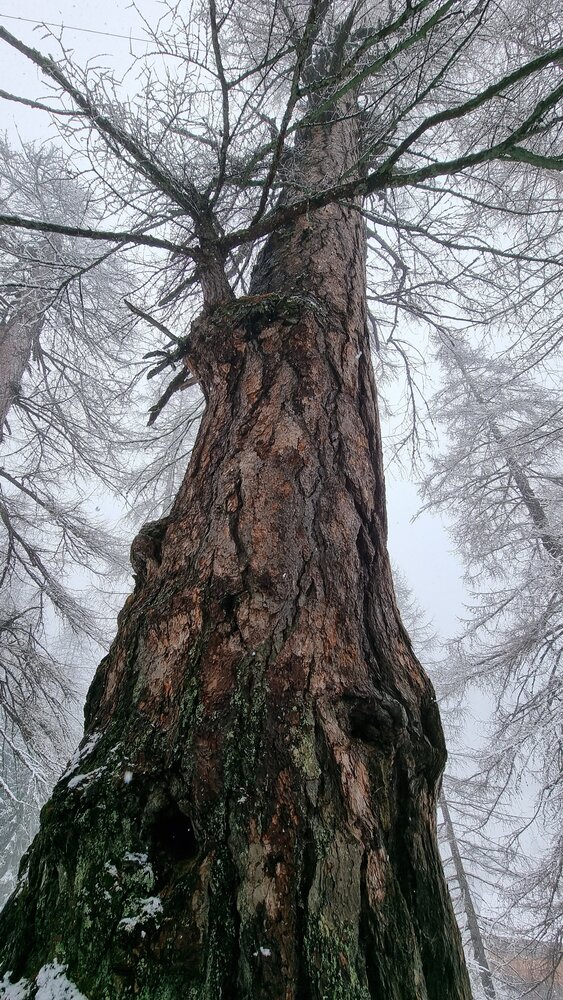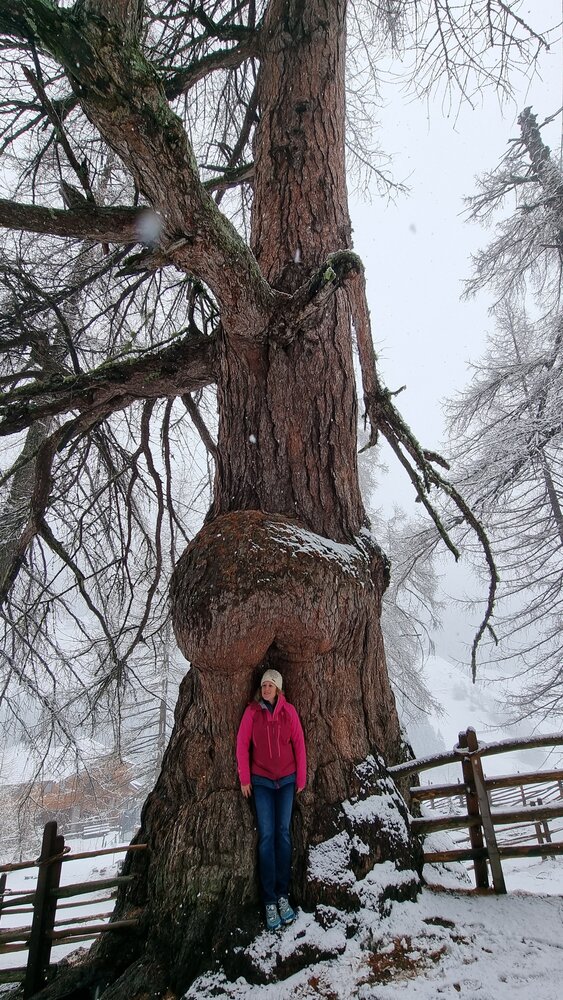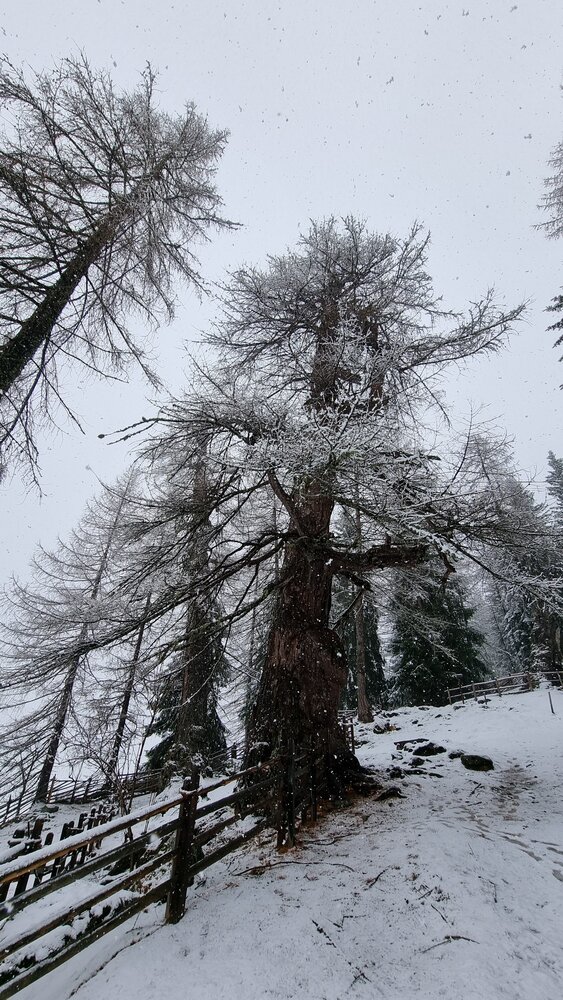The trees are the pillars of the world. When all the trees are cut down, the sky will fall on us.
Indian proverb
There are three European larches at the edge of a ban forest near St. Gertraud in the Ulten Valley. Once there were even four. But when one of them fell in 1930, it is said to have had over 2,000 annual rings. Therefore, this was also assumed for the other trees. In 2004, the age of the three larches was estimated to be about 850 years by various calculation methods. How old they actually are is something that only the three presumably know themselves. What is certain is that they are among the oldest conifers in Europe.
The tallest of the original larches is 36.5 m high and has a withered top, the result of a lightning strike. Its circumference measures a full 7 m. The thickest larch, with a circumference of 8.34 m, is almost as tall. It too has a withered top. The third larch has a large trunk cavity and burst at a height of 6 m generations ago. Its top now rises into the sky in the form of a secondary branch. Despite all adversities, the three trees green up anew every year.
And the three original larches are not only magnificent to look at. They are home to many animals and plants. For example, they provide shelter for woodpeckers, owls, martens and bats and are also called “bat larch”. The trees are also a veritable microcosm of lichens, fungi, algae, mosses and insect larvae. They were placed under nature protection and stabilised as early as1979 and are now part of the World Natural Heritage.
Below St. Gertraud begins a 30-minute walk that leads to the Urlärchen. The Ultner Höfeweg, on the other hand, leads from Kuppelwies to the Urlärchen in about 2.5 hours.
An absolutely impressive place of power that you should definitely visit!






